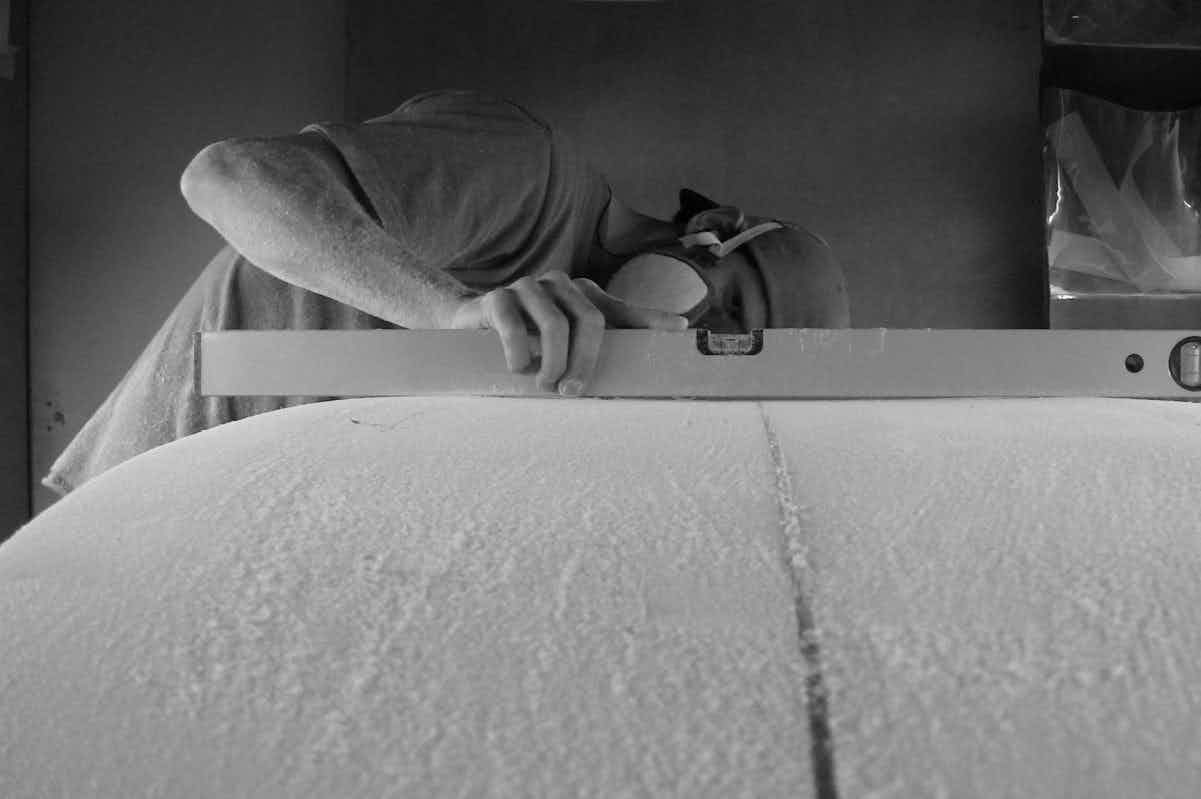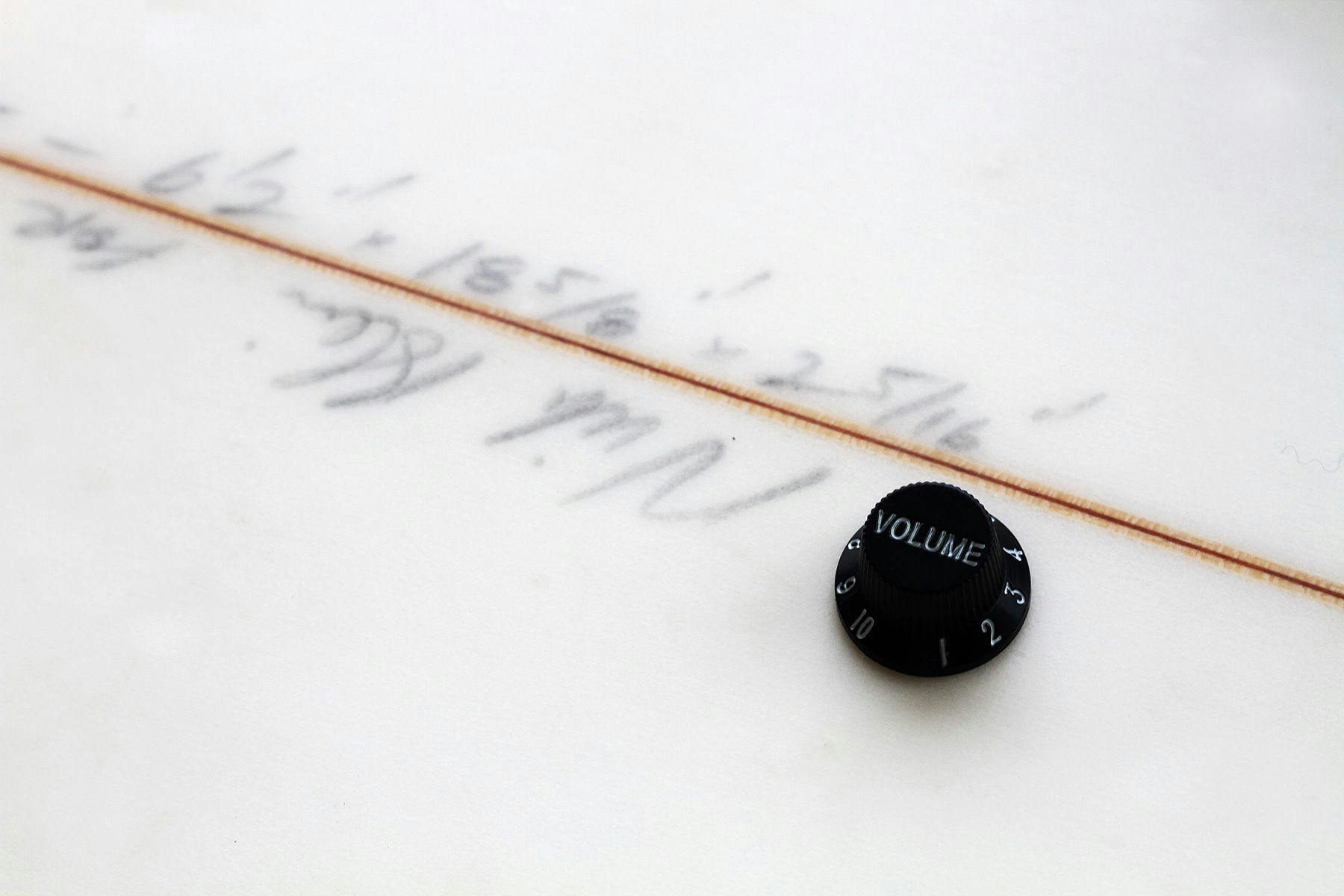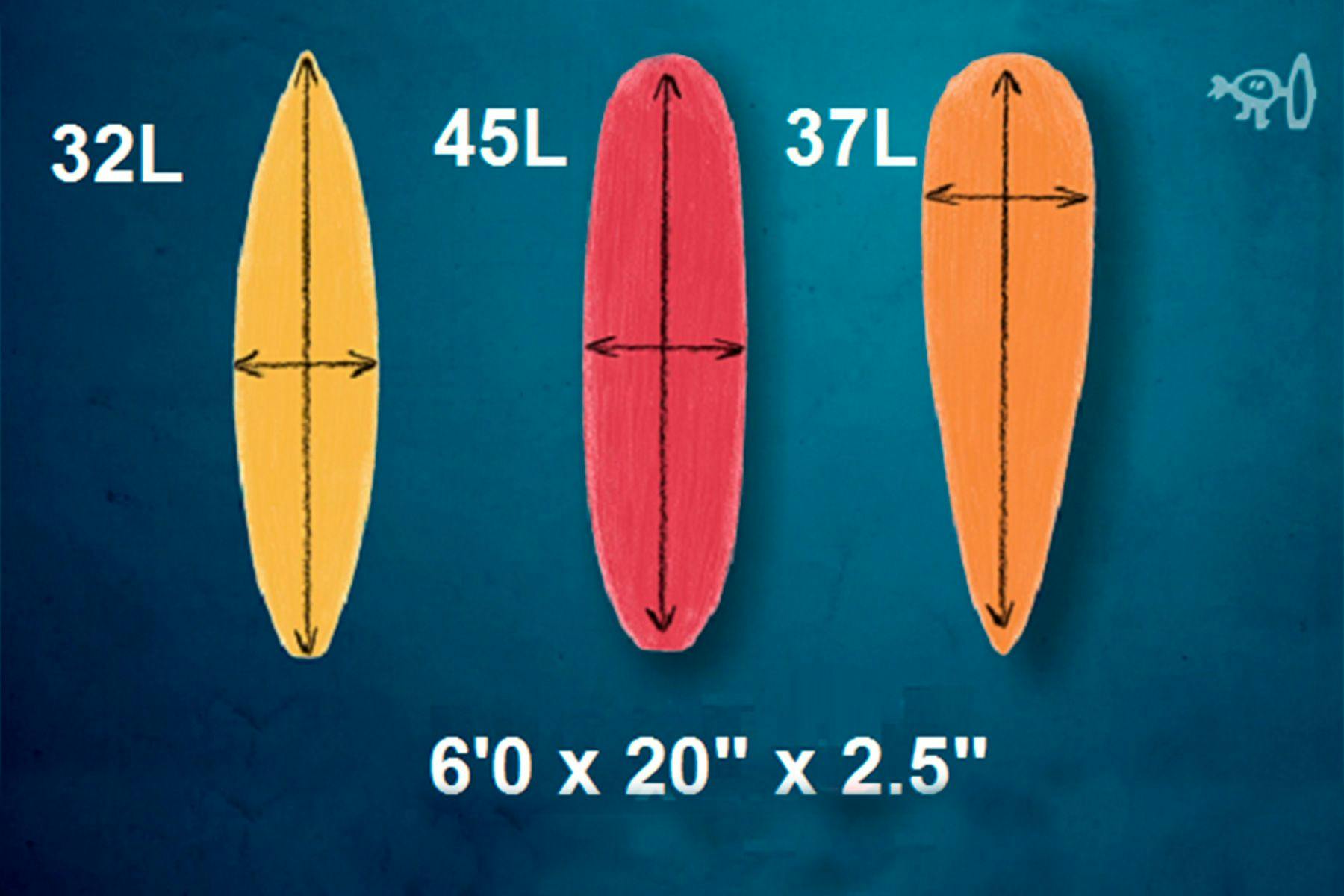Podcasts, Surf Coaching, SurfboardsVolume To Weight Ratios

Update Sep 2019: We now have an updated version of this article that you can read here. The update includes more information on our new Volume to Weight Chart, and how to use it.
In episodes 7 and 50 of the Surf Simply Podcast, the team spoke about the importance of understanding the volume of your surfboard, and it’s relationship to your size and weight. There have been quite a few people who’ve emailed asking for more details on this, so here’s a brief run-down of some of the things I was talking about.

What is Volume?
The volume of your board is a measurement of the total amount of space that your board occupies. If your board were a perfect cube, then a simple length x width x height calculation would be all we’d need. However, as your board is full of curves and concaves, the whole thing is a little more complicated. In the past, the only way of knowing, was to dunk your board in a bath, and see how much water was displaced and this is why we normally measure surfboard volume in Cubic Litres rather than Cubic Inches.

Nowadays with most boards designed using computer software, it’s easy to calculate the volume of a finished board, and most of the leading brands display the volume of their boards both on their websites, and increasingly on the surfboard itself. As some ballpark figures, an average shortboard would probably be around 25-35 Litres, while a 7’ funboard would be between 40-50L. A longboard might go from 60-100L, and an SUP could easily top 250L.
Why is Volume Important?
Volume matters because it gives us a realistic idea of how big our boards are. Ever since the “Retro Revolution” of the early 2000’s, people have been riding an increasingly diverse range of surfboards, and now the standard 3 dimensions (length, width and thickness) don’t give us enough information to decide if a board will work for us or not, and you can shape 3 boards with the same dimensions, that look and surf very differently.

3 Surfboards, identical dimensions, but very different volumes.
In reality, the thing that volume really tells us, is how “buoyant” the surfboard will be, and therefore how well the board will float you in the water. This matters because the higher a board floats you out of the water, the less drag your body will make when you paddle, and so the faster you’ll be able to move. The faster you can paddle, the more waves you can catch, and the less steep those waves need to be in order to catch them. However, the volume of the board is only half the equation, the other part is the weight of the surfer, as a heavier surfer will need more volume to float him.

You can check out an interactive version of the Volume to Weight Calculator here.
This brings us to our important ratio; Volume-to-Weight, which we normally talk about in Pounds per Litre (lbs/L) as these are the 2 figures most surfers know, but Kilos per Litre works as well . To get this number you simply divide the surfers weight by the volume of the board, the higher the resulting number is, the smaller the board relative to the surfer. Here are a few examples:
Height Weight Volume Volume/Weight
Kelly Slater 5’9 (175cm) 160lbs (72kg) 24.0L 6.6 lbs/L (3.0kg/L)
Mick Fanning 5’10 (177cm) 165lbs (75kg) 26.3L 6.3 lbs/L (2.9kg/L)
Dane Reynolds 6’0 (183cm) 180lbs (81kg) 29.2L 6.2 lbs/L (2.8kg/L)
Steph Gilmore 5’10 (178cm) 146lbs (66kg) 24.2L 6.0 lbs/L (2.7kg/L)
Harley Ingleby 6’2 (188cm) 188lbs (85kg) 65.3L 2.9 lbs/L (1.3kg/L)
Harry Knight 6’1 (185cm) 180lbs (81kg) 33.0L 5.6 lbs/L (2.5 kg/L)
Jessie Carnes 5’6 (170cm) 130lbs (58kg) 27.1L 4.8 lbs/L (2.7kg/L)
Ru Hill 5’8 (173cm) 160lbs (73kg) 27.1L 5.1 lbs/L (2.7kg/L)
What do I do with this Information?
An excellent question. Firstly, do not view any size of board as a “goal”, you should view a maneuver as a goal. Too many people view the size of their board, or lack there of, as a badge of their ability in the water. The problem is that while a smaller board is, in theory, easier to turn than bigger one, it is also easier to force bad technique on, which long term will hold you back far more than those extra 10 liters ever could. A board that is too small will paddle slow, catch waves late, bog down in turns, and generally make your surfing look terrible. A board that is too big on the other hand, has only one downside; if you’re technique is poor, you can’t cheat and try to torque the board round with your upper body. Smaller boards let you trim turns more easily, which can fool you into thinking your carving turns better but learning to carve turns is actually harder on a low volume board because you have less speed. Surfing bigger boards after an injury a few years ago, did more for my surfing than anything else, as it forced me to re-evaluate how I was using my body, and what I needed to change.
Devon Howard demonstrating how good technique, not low volume, is the key to great surfing.
So here’s what you should do; use this information to find a realistic starting point, to help you choose what board to ride, rent or buy. As a bit of a guideline, 2.0lbs/L is probably the smallest board that’s practical for learning in the white water, while 3.5-4lbs/L is probably the biggest board that most people can duckdive.
The smallest I’ve been able to find anyone riding on a regular basis is around 6.6 lbs/L, with several world title contenders using some boards at this ratio. Here are some suggested minimum board sizes for different abilities (remembering that the higher the number, the smaller the board).
Level 1: Whitewater, Learning to Stand & Manoeuvre: 2.0lbs/L (0.9kg/L)
Level 2: Paddling out, dropping straight down the face: 2.6lbs/L (1.2kg/L)
Level 3: Trimming Down the Line, Attempting Turns: 3.0lbs/L (1.3kg/L)
Level 3.5: Performing Basic Cutbacks & Lip Hits: 4.0lbs/L (1.8kg/L)
Level 4: Aggressive Top to Bottom Surfing: 6.0lbs/L (2.7kg/L)
Level 4+: Professional Level Surfer: 6.6lbs/L (3.0kg/L)
For more information on the Surf Simply Levels, check out our Tree of Knowledge.
Volume is not the be all and end all of surfboard design, but it is the most accurate way to compare the huge range of boards that are now on the market. Find a good volume that suits your fitness, ability and comfort level in the surf, and see what boards you can find in that range. Then, if you have to choose between a few, always take the bigger board, you won’t regret it. Like the Rob Machado always says “Foam is your friend.”